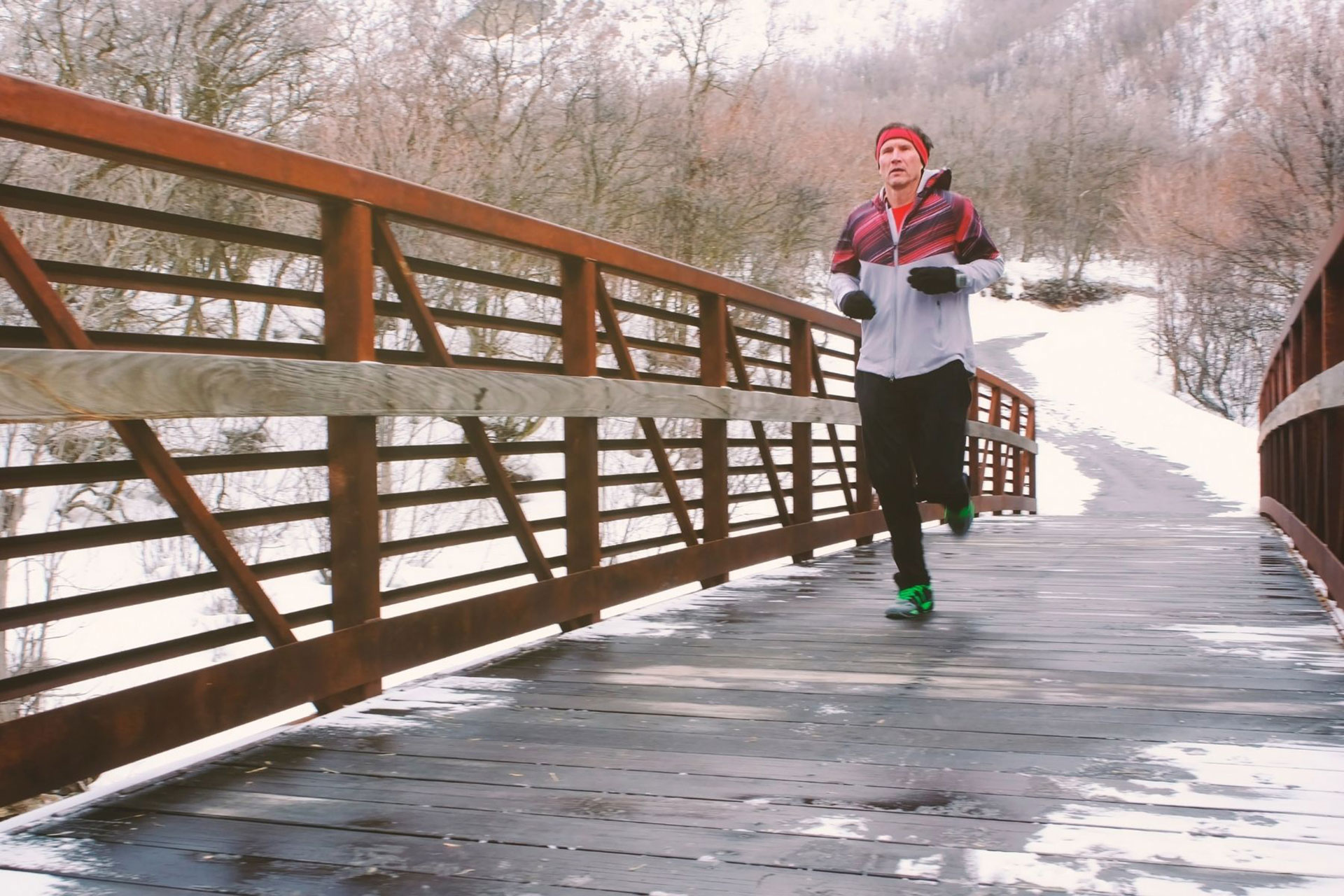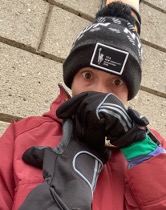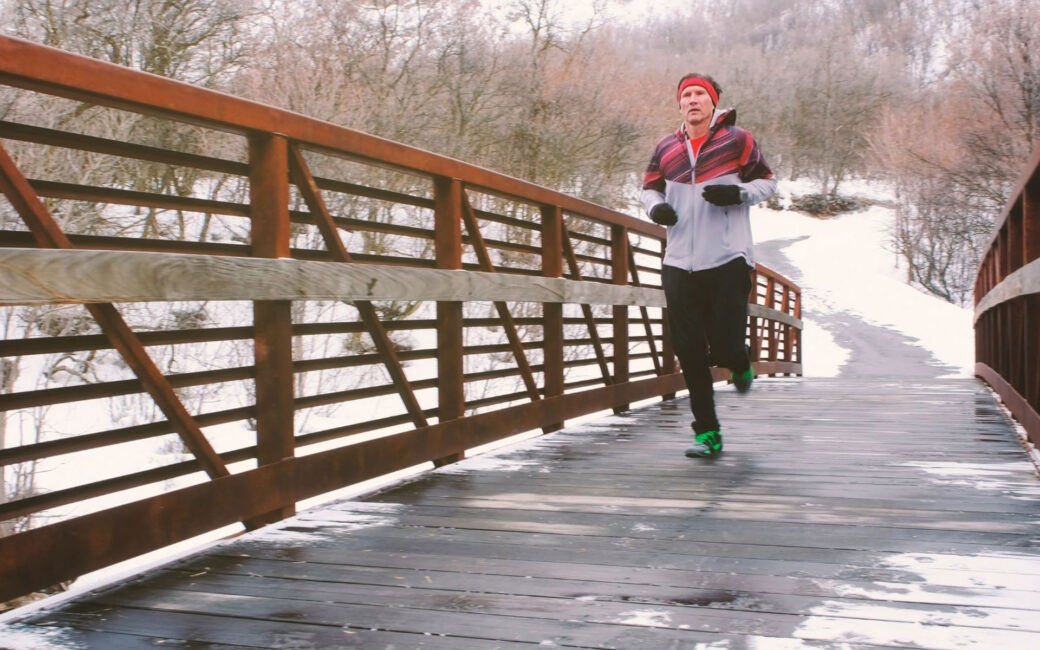How to transition into the outdoor running season
With the spring coming up, many are transitioning to outdoor running. Here's what you need to remember for a successful transition.
Mar 17, 2022 | Britt Gunsser, DPT

Winter running, especially in the Northeast, requires planning, flexibility, and mental grit. Spring races, such as the Boston Marathon and NYC Half Marathon, require 25,000-30,000 participants to train through the winter. As a participant in the latter, I’ve battled it out with winter training the past few months. The temperatures get well below freezing, the roads get icy, and the sunlight gets scarce. All of these variables require runners to have a plan: is it safe to run outside? Is it smart to run outside? Will I accomplish my training goal running outside today? Do I want to run outside?
If the answer to these questions is “yes,” then comes the planning. Visibility, warmth, traction, and water resistance need to be accounted for depending on the conditions of the day. Running in the morning or at night requires a reflective or illuminated vest to be seen by cars. Running in snow and ice requires shoes with better traction, and possibly a decrease in pace. Temperatures below 40 degrees require layering techniques, with increased layers as the temperatures grow colder. Hands and ears, receiving the least circulation, need to be covered. Warmups need to be thorough to truly warm up your body before heading out into cold temperatures. Putting all of that together, the end of my winter runs looked a lot like this (featuring ice on hat, runny nose, double layered gloves, triple layered shirts):
If the answer to these questions is “yes,” then comes the planning. Visibility, warmth, traction,
and water resistance need to be accounted for depending on the conditions of the day. Running
in the morning or at night requires a reflective or illuminated vest to be seen by cars. Running
in snow and ice requires shoes with better traction, and possibly a decrease in pace.
Temperatures below 40 degrees require layering techniques, with increased layers as the
temperatures grow colder. Hands and ears, receiving the least circulation, need to be covered.
Warmups need to be thorough to truly warm up your body before heading out into cold temperatures.
Putting all of that together, the end of my winter runs looked a lot like this (featuring ice on
hat, runny nose, double layered gloves, triple layered shirts)

As hours of sunlight and temperatures start to increase, so does the appeal of outdoor running. It becomes easier to choose the pavement over the treadmill, which can help a runner prepare for race-like conditions. For most, running feels best in the 40s and 50s with low humidity, giving March and April the potential to have great running conditions (aside from the occasional late northeast snowstorm).
Though the weather conditions improve, certain things remain constant no matter the weather: warmups, strength training, proper fueling, and recovery are all necessary. While it is advised to warm up inside during the winter months, your warmup can now be done outdoors when the sun is up and the temperatures are warmer, but it should still be thorough and run-specific. Strength training (advised two days/week during a race training cycle) should still be done on hard workout days, involving leg, core and upper body exercises.
Fueling, which includes pre-, during, and post-workout, remains crucial to recovery between sessions. Fueling is often the most difficult variable for runners to independently plan. I recommend working with a registered dietician with experience with endurance athletes to discuss fueling strategies and decide which is best for you. These strategies should be practiced during the training cycle, and nothing new should be tried on race day. As training cycles ramp up, caloric intake (specifically of carbohydrates) should also increase. Runners are often unknowingly under-fueled because of day-to-day nutrition. A dietician can provide strategies to combat this.
Recovery and rest days are also extremely important. They allow the body to make beneficial adaptations to hard training sessions to truly begin to show improvement. Recovery runs are often assigned in training cycles, and should be kept at a very easy, conversational pace to promote recovery. Full rest days should be exactly as they sound: full of rest. Though rest and recovery days are not as active as workout days, nutrition remains equally as important as the body tries to replenish from the previous workout and prepare for the next one. These are also perfect days to utilize recovery tools available to you. My Hypervolt remains within arm’s reach and I often sit with NormaTec boots on these days to get my legs feeling better and ready for my next workout. I also like to use an infrared sauna, which has been proven to promote recovery from high-level endurance performance training (and feels great during the cold winter months).
As spring approaches, I look forward to shedding the layers in comfortable running conditions, seeing everyone out on the pavement and seeking a personal best in the half marathon!

Britt Gunsser
Britt Gunsser, DPT, OCS, CSCS, is a board certified orthopedic clinical specialist and dry needling specialist. She is a certified RRCA Running Coach who has run multiple marathons and half-marathons.
